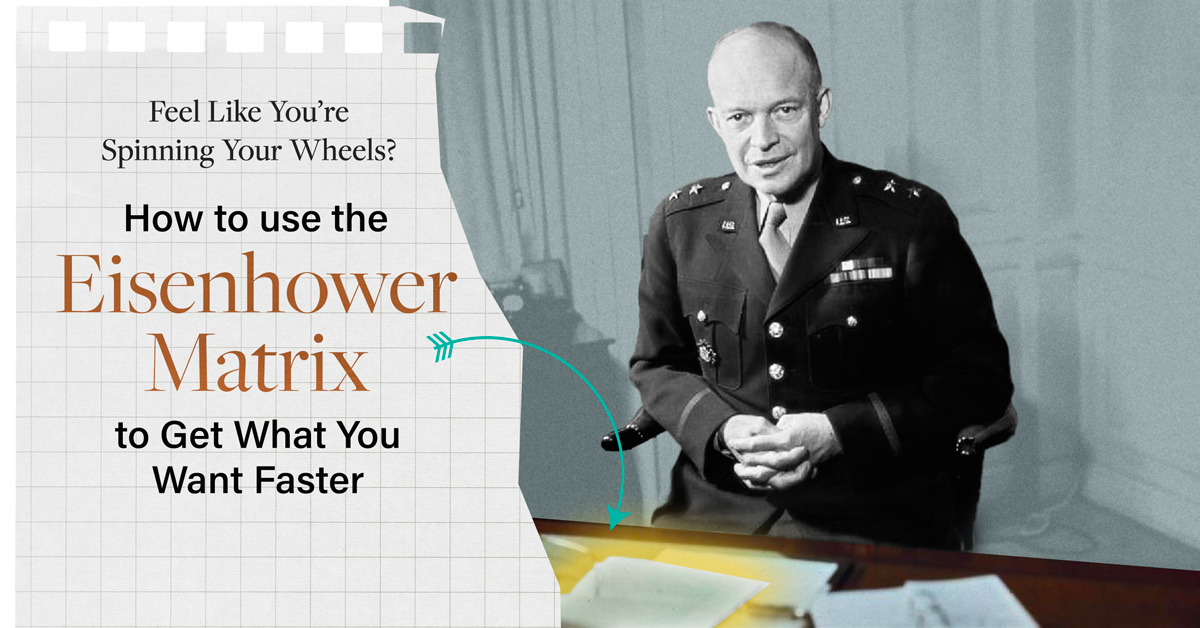It’s going to happen.
No matter how diligent we are, no matter how watchful, no matter how perfectly in-control, life is going to happen.
We’re going to get a courtesy reminder about our follow-up doctor’s appointment on the same day we get an email from the DMV, informing us that our car’s registration is about to expire. Five minutes later, we’ll get a text from our boss about a project deadline – which just got moved to the same day that we’re supposed to be helping plan a friend’s birthday. We’re overdue for a haircut and the dishwasher just started leaking water all over the kitchen floor. We've been trying to dedicate time to a passion but haven't done so in months.
The specifics might change but the inevitability won’t. Even the very best of us will find ourselves in situations where we’re so overwhelmed by the number of things that need to be done that we simply shut down. It might be tempting to tell ourselves to “just do it” but whipping ourselves onwards can leave us burned out, bewildered, and somehow even more swamped than when we began.
What’s the solution, then? What do we do when checking out isn’t an option and whipping ourselves onwards isn’t effective? The answer lies in one of the most sophisticated and shockingly simple time-management tools ever developed:
The Eisenhower Matrix.

The Method That Won The War
Drawing its name from WWII commander, 34th President, and all-around-badass Dwight D. Eisenhower, the Eisenhower Matrix helps us make sense of almost impossibly-intricate situations, competing to-do lists, and conflicting priorities. While not the method’s inventor (Eisenhower humbly ceded credit to an unnamed mentor), his peerless ability to prioritize and compartmentalize gave structure to the monumental tasks before him, allowing him to command tens of thousands, manage the egos of his counterparts, protect the lives of his men, and still fit in a friendly game of bridge into his schedule.
While we probably aren’t going to be tasked with organizing the deliverance of France from the Nazis (though we’ll see what 2021 brings), there’s no question that life is more complicated now than at any other point in history. As we enter our thirties, we’re expected to be both discerning customers and career-minded professionals. We’re meant to be existentially grounded, emotionally stable, and physically fit – all while making time for our families and loved ones.

It’s no easy task, even at the best of times, but when it comes to retaking control of our lives, the Eisenhower Matrix gives us an astonishingly straightforward place to start – distinguishing between what’s urgent and what’s important.
The Important Versus The Urgent: Making The Eisenhower Matrix Work
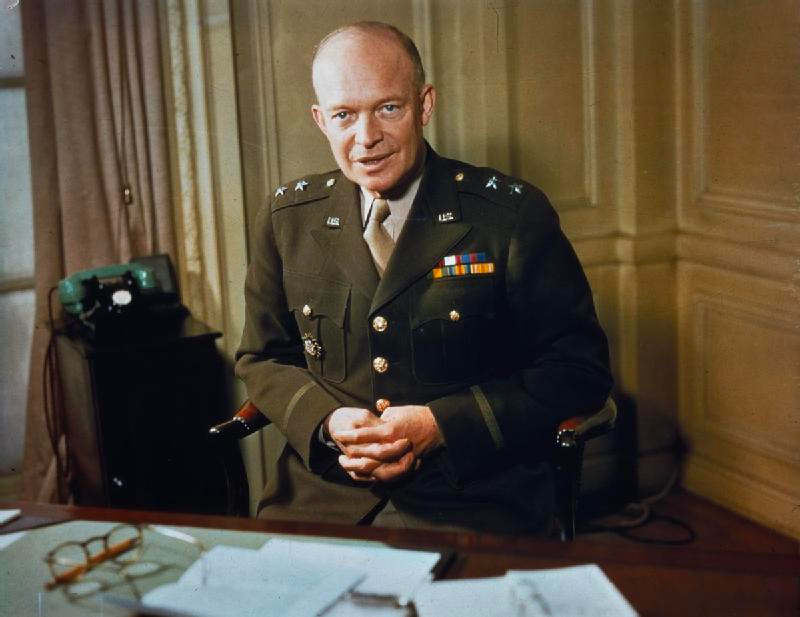
At its most basic, urgency boils down to the time-sensitivity of a task and the severity of failing to accomplish it. Failure to cancel our free trial by Sunday will result in a ten-dollar charge to our bank account. Failure to deliver a pitch by the 22nd will result in the client taking their business elsewhere. Failure to take the pizza out of the oven in fifteen minutes will result in a charred, inedible mess (or a charred, uninhabitable house – depending on how long we leave it).
While urgency comes down to the timeliness of any given task, importance is all about impact – the lasting, long-term effects we’re trying to achieve. Obvious as that might seem, the simple truth of the matter is that our end goals are easy to lose sight of in the tangle of daily life.
Arriving at the destination we want means accurately appraising the routes we’re on now.

Once we’re able to gauge a task by these metrics, we can start assigning them to one of four quadrants:
- the important and urgent (or “Do”)
- the important but not urgent (“Decide”)
- the urgent but not important (“Delegate”)
- and the neither urgent nor important (“Delete”).
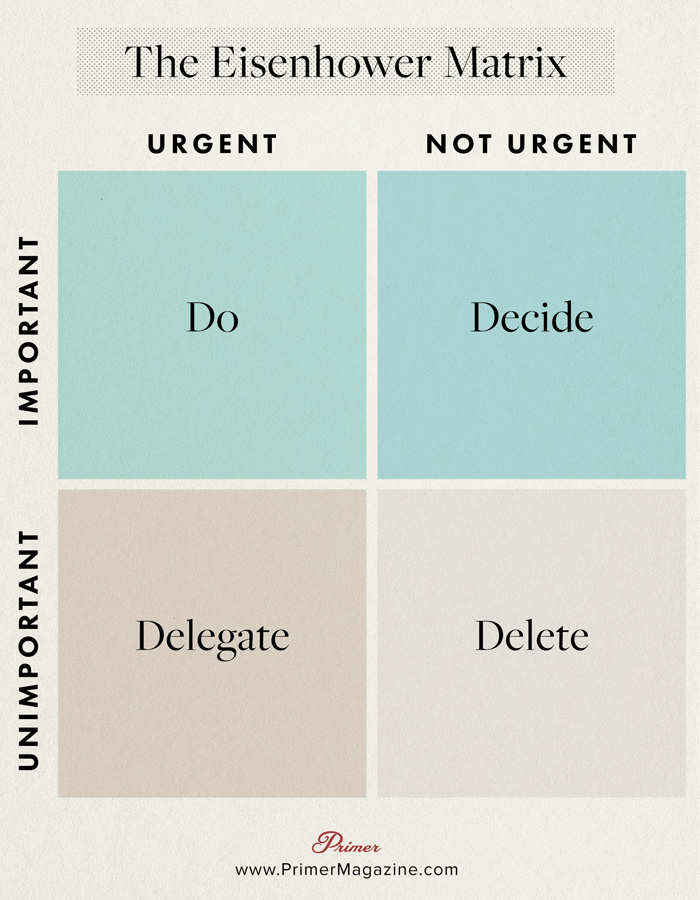
Self-explanatory as it is, don’t make the mistake of thinking that’s all there is to it. Each quadrant of the matrix comes with an entire approach for handling the duties we assign to them. For every aspiring man-with-a-plan, however, there’s no better foundation for taking on a complex task and no better place to start than with…
Do: Important And Urgent

The Do quadrant represents the tasks that we identify as both important and time-sensitive – the things that must be done and must be done today. Filtering our to-do list through that metric, we’re going to see the nonessentials rapidly vanish – giving us a much clearer picture of where to start. Just as vitally, isolating our priorities keeps us from wasting valuable time, resources, and brainpower on tasks that aren’t actually critical. For anyone who’s heroically thrown themselves at their to-do list only to come away feeling exhausted and ineffective, this is going to make all the difference.
And it doesn’t stop there.
Training ourselves to zero-in on the absolute essentials doesn’t just make us more productive – it’s an essential component of being a leader in an emergency. In times of crisis – whether that’s half the office getting laid off or a fire at your cousin’s wedding – the person springing into action is going to be the person who knows what action to take.
Decide: Important But Not Urgent
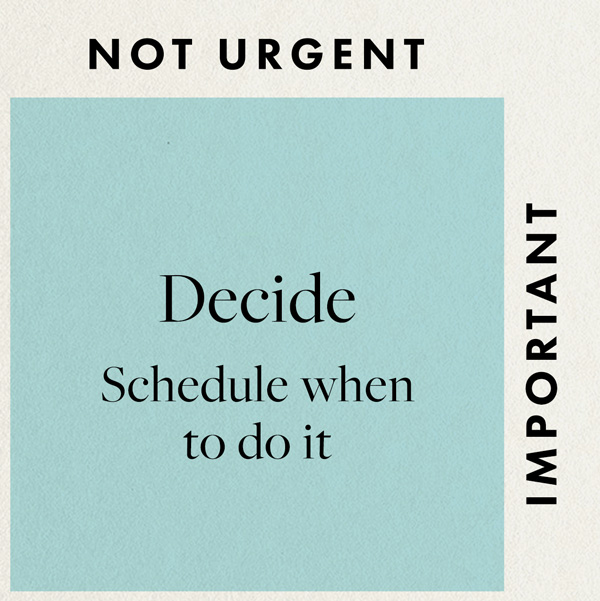
It doesn’t need to be done right now but it needs to be done right.
From preparing for fatherhood to planning a thoughtful Valentine’s Day to teaching yourself one new home-repair skill per month, the tasks we place in the decide quadrant should be ones that truly help us move closer to our goals and who we want to be. Unfortunately, they’re also the easiest to keep pushing off.
We can’t roll the dice on the things that truly matter to us or blithely hope that things will all work out. Isolating something in the decide quadrant doesn’t just give us time to effectively plan, it gives us time to refocus on the long-term objectives we’re trying to achieve. That inclusion of purpose to our plans doesn’t just help us make them, it can actually help us carry them out!
Delegate: Unimportant And Urgent
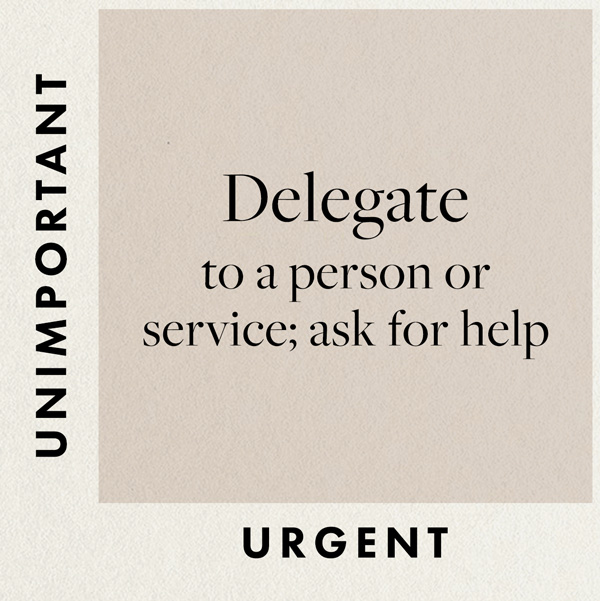
At first blush, this might seem irrelevant – the kind of hollow advice that infests business blogs and doesn’t apply to anyone making less than 120K. After all, most of us aren’t managers or supervisors. How are we realistically supposed to deal with chores that don’t take careful planning but still need immediate attention?
By asking for help.
Delegate isn’t simply a category, it’s an all-important command to set our egos aside and ask for assistance.
The tasks we assign to this quadrant aren’t the tasks we don’t want to do, they’re the things that can be done without us.The reservation has to be made by seven, the community partners need to be given a tour, the dishes need to be washed, and none of those things require us personally to be accomplished.
It can feel counterintuitive – maybe even selfish – but effectively handing-off urgent-but-not-important tasks ensures the job gets done while simultaneously freeing us up for the items in the two Important quadrants (or for some desperately-needed rest). For those of us who are in leadership positions, delegating doesn’t simply help us command, it gives those around us a chance to learn and grow.
Delete: Unimportant and Not Urgent
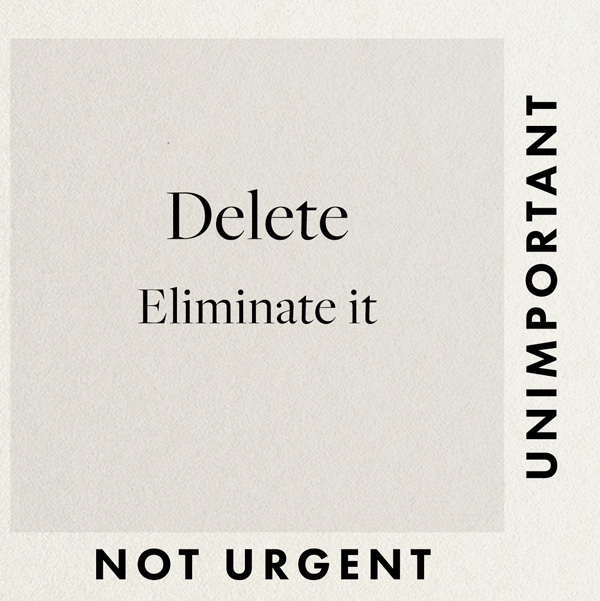
Sitting at the intersection of “not urgent” and “not important,” the Delete quadrant might seem like the least important of all these options – a catch-all for anything that couldn’t fit anywhere else. Nothing could be further from the truth.
When it comes down to it, the decision to drop a task is just as crucial as our decision to do it.Let’s be clear: Delete doesn’t simply mean “ignore.” This isn’t about letting the non-priorities slide, it’s about consciously eliminating them. In our professional lives, that might mean scrapping pointless procedures or those meetings-that-could’ve-been-emails.
In our personal lives, it might mean challenging the one-time-favor that evolved into a commitment, the new year’s resolution that’s not making us better, or even the friendship that’s gone stale. It might sound tough – maybe even brutal – but the question needs to be asked: if not doing it in time doesn’t hurt us, if accomplishing it doesn’t help us, then what exactly are we doing it for?
It’s here that the true genius of the Eisenhower Matrix lies. Beyond the simplicity, beyond the universality, it’s the challenge. The challenge to leap into action when something can’t be ignored. The challenge to recenter ourselves on our ultimate vision and goals. The challenge to exercise humility in sharing our workloads. The challenge to eliminate what doesn’t enrich us. Put to use, the Eisenhower Matrix means efficiency when applied to our professional world. Applied to our personal lives? It means freedom.



